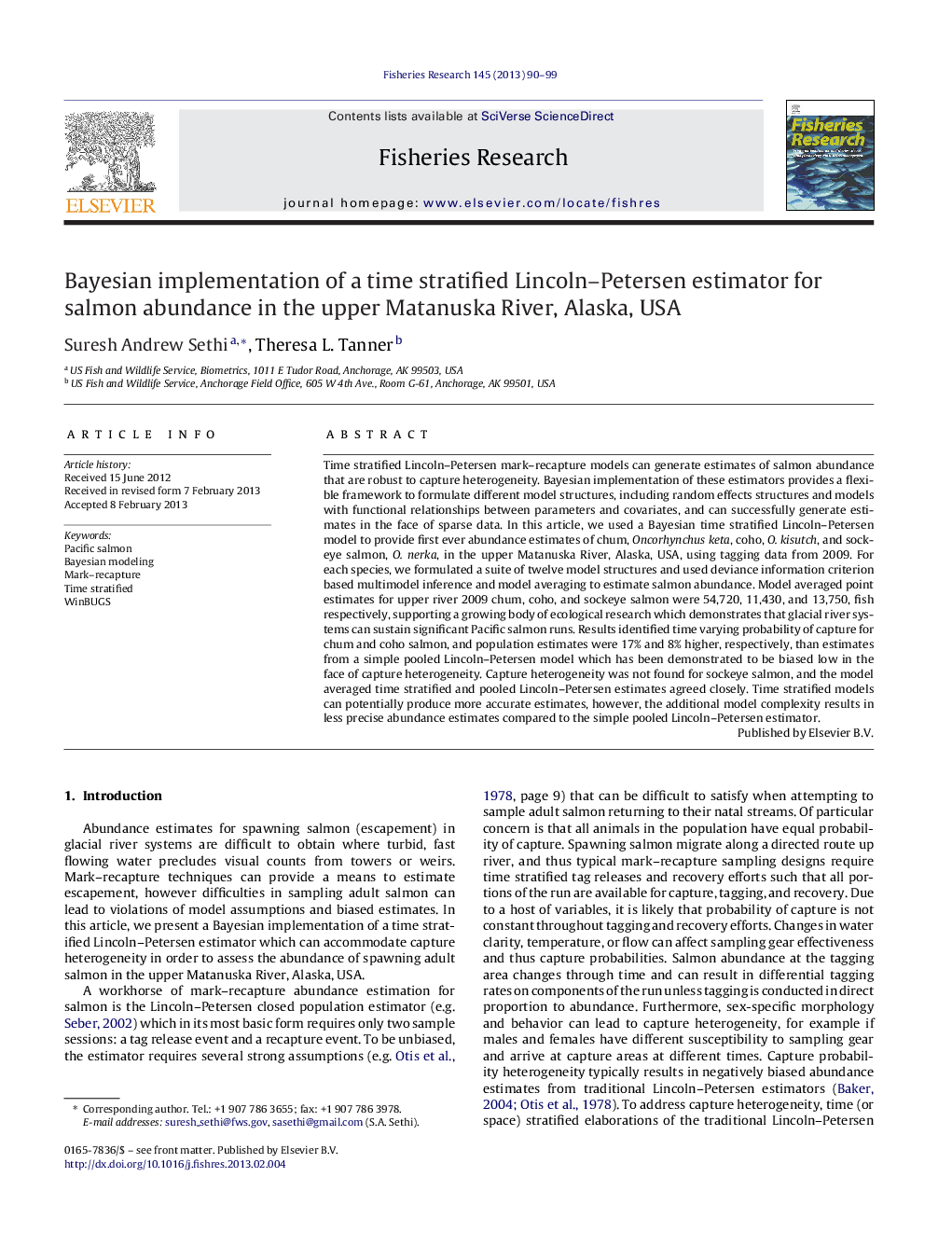| Article ID | Journal | Published Year | Pages | File Type |
|---|---|---|---|---|
| 6386074 | Fisheries Research | 2013 | 10 Pages |
Time stratified Lincoln-Petersen mark-recapture models can generate estimates of salmon abundance that are robust to capture heterogeneity. Bayesian implementation of these estimators provides a flexible framework to formulate different model structures, including random effects structures and models with functional relationships between parameters and covariates, and can successfully generate estimates in the face of sparse data. In this article, we used a Bayesian time stratified Lincoln-Petersen model to provide first ever abundance estimates of chum, Oncorhynchus keta, coho, O. kisutch, and sockeye salmon, O. nerka, in the upper Matanuska River, Alaska, USA, using tagging data from 2009. For each species, we formulated a suite of twelve model structures and used deviance information criterion based multimodel inference and model averaging to estimate salmon abundance. Model averaged point estimates for upper river 2009 chum, coho, and sockeye salmon were 54,720, 11,430, and 13,750, fish respectively, supporting a growing body of ecological research which demonstrates that glacial river systems can sustain significant Pacific salmon runs. Results identified time varying probability of capture for chum and coho salmon, and population estimates were 17% and 8% higher, respectively, than estimates from a simple pooled Lincoln-Petersen model which has been demonstrated to be biased low in the face of capture heterogeneity. Capture heterogeneity was not found for sockeye salmon, and the model averaged time stratified and pooled Lincoln-Petersen estimates agreed closely. Time stratified models can potentially produce more accurate estimates, however, the additional model complexity results in less precise abundance estimates compared to the simple pooled Lincoln-Petersen estimator.
⺠Bayesian time stratified mark-recapture models are robust to capture heterogeneity. ⺠We implemented a suite of Bayesian models and used DIC based multimodel inference. ⺠We generated first ever upper Matanuska River, AK, salmon run size estimates. ⺠2009 Matanuska abundance estimates: chum = 54,720, coho = 11,430, sockeye = 13,750 fish.
